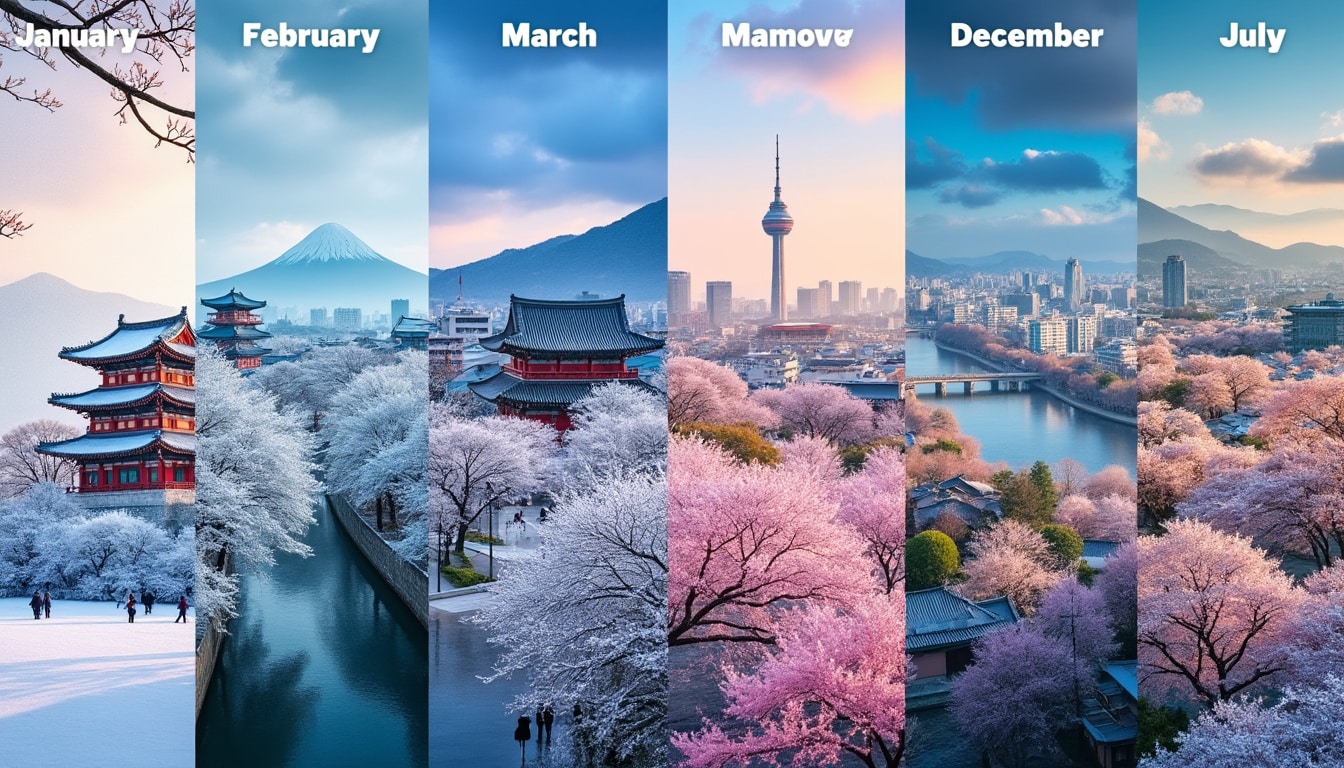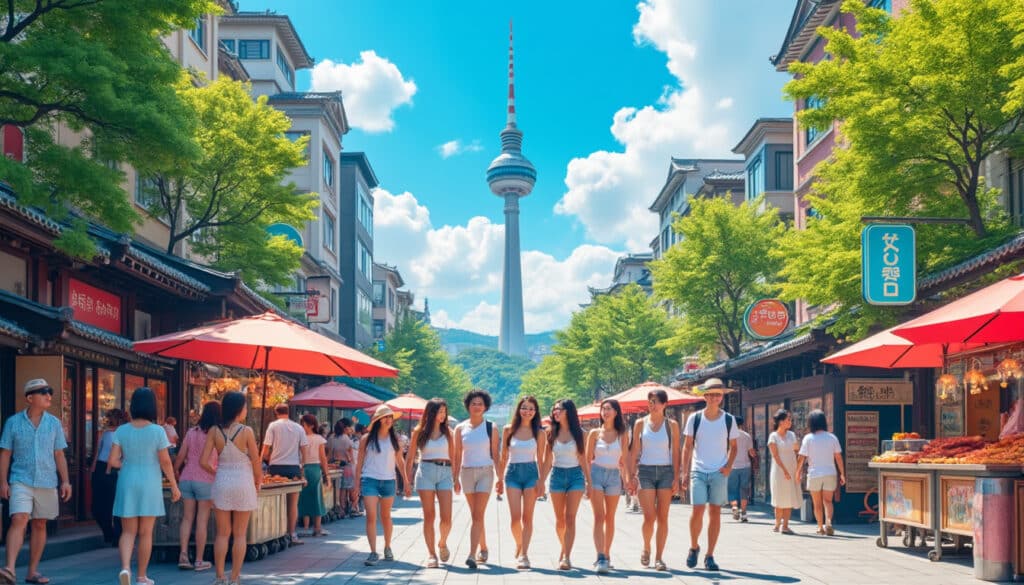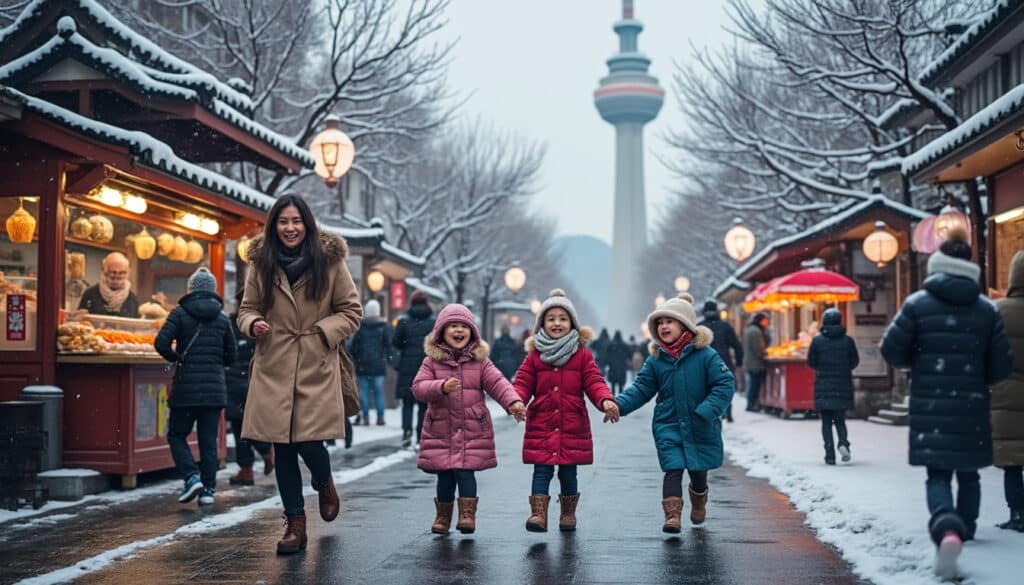Seoul, the vibrant capital of South Korea, is a city known for its dynamic atmosphere, rich cultural heritage, and fascinating weather patterns that shift dramatically throughout the year. Understanding Seoul’s weather by month is essential for both tourists planning their visit and residents adapting to the changing seasons. With cold winters, hot and humid summers, and pleasant spring and autumn periods, Seoul’s climate is as varied as the city itself. This guide delves into the month-by-month weather in Seoul, providing insights into temperature averages, precipitation patterns, and seasonal activities that define Korea’s largest metropolis.
January: Experiencing Seoul’s Chill
January in Seoul is characterized by cold temperatures and clear skies, making it the coldest month of the year. The average high temperature during January hovers around 3°C, while the low can dip to -6°C. Despite these frigid temperatures, the city’s allure doesn’t wane for those who embrace the cold. ❄️
The clear skies of January offer an unhindered view of the city’s landmarks, such as the Namsan Seoul Tower and Gyeongbokgung Palace. These crisp, sunny days are interspersed with the occasional snowy spell, transforming Seoul into a picturesque winter wonderland. With an average snowfall of 29 millimetres, January presents a serene and icy landscape ideal for photography enthusiasts.
| Weather Condition | Details | Emoji |
|---|---|---|
| Average High Temperature | 3°C | 🌡️ |
| Average Low Temperature | -6°C | 🌡️ |
| Snowfall | 29 mm | ❄️ |
Seoul’s New Year festivities are often set against this chilly backdrop, with celebrations that highlight the city’s rich traditions. Seoul snowfall experiences are a delight for locals and tourists alike, offering a unique way to start the year.
For travelers, January’s low tourist traffic means less crowded attractions, but it’s crucial to bundle up against the biting cold. Investing in thermal wear is advisable for those planning to explore the city’s outdoor attractions.
In addition to the chill, January is relatively dry, having only about four wet days. If you are visiting during this month, be sure to experience Seoul’s winter activities, such as the seasonal ice skating rinks, which are popular among both locals and tourists. 🏒🥌
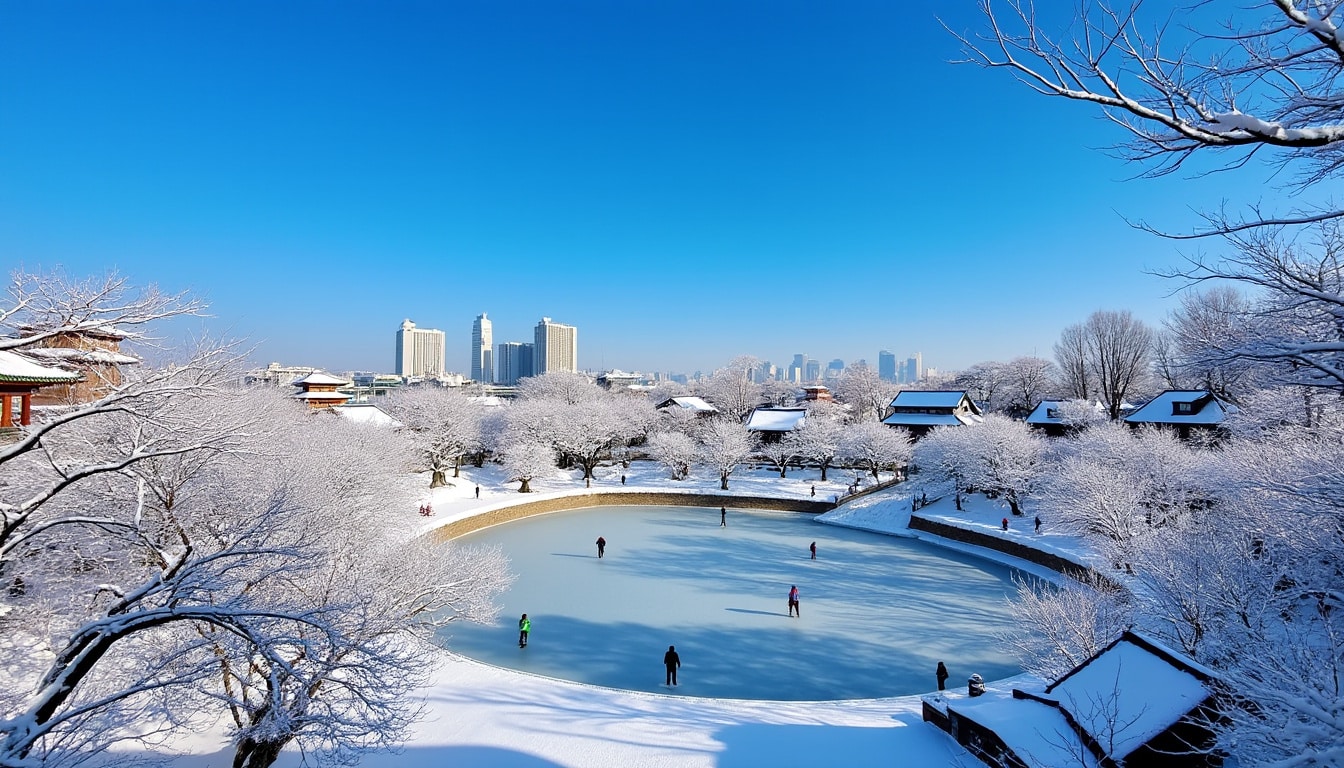
February: Seoul’s Snowy Farewell to Winter
February marks the tail end of Seoul’s winter, offering a continued embrace of cold temperatures with an average high of 4°C and lows reaching -3°C. Though still chilly, February introduces subtle hints of the upcoming spring. The sky remains mostly clear, providing the illumination that is often sought during winter months. February is notably the month in Seoul with the coldest water temperatures, about 4°C, ideal for those who engage in colder activities.
For snow lovers, February still offers opportunities to enjoy the snowy scenes as the snowfall decreases to 22.4 millimetres, seamlessly transitioning the cityscape to anticipate warmer days. The sunlight, albeit limited, casts enchanting shadows creating a photogenic blend of stark winter tones and the softer whispers of spring.
- ❄️ Average High Temperature: 4°C
- ❄️ Average Low Temperature: -3°C
- ☃️ Snowfall: 22.4 mm
The moisture levels remain low, encouraging even non-winter sports enthusiasts to partake in outdoor activities. February is a perfect time to head to the less crowded parts of Seoul, such as the resplendent parks and city outskirts, where the beauty of untouched snow can be truly appreciated.
February offers just enough winter to enjoy the city’s ice skating rinks and warm cafes bustling with locals warming up with Korean traditional teas. The beginning of March heralds the start of spring, making February an ideal time to appreciate the last of winter’s beauty in South Korea’s bustling capital.
March: Transition to Spring in Seoul
By March, Seoul begins to shake off its winter blanket as temperatures start to climb steadily, signaling the onset of spring. The average high temperature rises to approximately 10°C, with lows around 3°C, offering a more comfortable environment for those eager to explore the city. 🌸
One of the key attractions is the blossoming season, with cherry blossoms beginning to make their appearance towards the end of the month. These breathtaking blooms draw both tourists and locals to parks and historical landmarks, such as the Yeouido Park and the ancient palaces, creating a scenic contrast that is vivid and serene.
March Weather Details:
| Measurement | Average | Emoji |
|---|---|---|
| High Temperature | 10°C | 🌡️ |
| Low Temperature | 3°C | 🌡️ |
| Precipitation | 37 mm | 🌧️ |
While the temperatures rise, the length of daylight increases, offering more opportunities to take part in extended outdoor activities. This is also a perfect time for nature lovers to visit Seoul Forest and the Han River Park, where early spring greenery and floral scents fill the air.
March, with its moderate temperatures and increasing daylight, sets a pleasant stage for taking leisurely walks in the city’s vibrant neighborhoods or relaxing in one of its numerous soothing tea houses. For fashion enthusiasts, layering becomes a playful activity as spring collections make their way into the stores.
April: Seoul in Full Bloom
April transforms Seoul into a canvas of vibrant colors as spring blooms reach their peak. The average high temperature ascends to a delightful 17°C, with lows near 9°C, creating an inviting atmosphere for outdoor adventures. 🌿 The pleasant warmth of the sun complements the explosion of cherry blossoms and azaleas, particularly at iconic sites like Namsan Park and the Seoul Grand Park.
The city’s weather attracts crowd turnout, with festivals celebrating the floral displays and the arrival of spring. Visitors should not miss the Yeouido Spring Flower Festival, which is renowned for its stunning cherry blossom-lined walkways overlooking the Han River.
- 🌸 Average High Temperature: 17°C
- 🌼 Average Low Temperature: 9°C
- ☂️ Rainfall: 62.9 mm
The steady climb in temperature also signifies the revival of outdoor markets that captivate food enthusiasts and shopping lovers alike. From indulging in street food delicacies to purchasing handmade crafts and gifts, there is always something happening in Seoul during April.
Subtler indicators of spring are also noticeable in ecological indicators. The increase in solar energy and extended daylight hours foster an ideal environment for flora and fauna. As the calendar heads toward the warmer part of the year, figures such as humidity, precipitation, and wind patterns are crucial for planning activities, a task made simpler by reliable forecasts from AccuWeather, The Weather Channel, and Weather.com.
May: A Warm Welcome
May in Seoul signals the beginning of warmer temperatures as it transitions into late spring and early summer. Visitors can relish the temperate climate with averages of 23°C for highs and 14°C for lows, making it an excellent time for sightseeing and enjoying nature. 🌞
The city during May is lush and inviting, with greenery flourishing at every corner as trees have fully shed their winter barrenness. Popular outdoor spots like the Hangang River stretch become bustling with activities, from bicycle rides to picnics under azure skies.
May Weather Highlights:
| Feature | Details | Emoji |
|---|---|---|
| High Temperature | 23°C | 🌡️ |
| Low Temperature | 14°C | 🌡️ |
| Precipitation | 85 mm | 🌧️ |
Humidity begins to rise, preparing residents and tourists for the approaching summer conditions. Comfortable and conducive to exploration, May crowns its aura with the month-long Seoul Rose Festival, a fragrant experience that is both floral and musical.
As visitors explore Seoul, they can rely on weather updates from popular services such as MeteoGroup, BBC Weather, and the Korean Meteorological Administration, which provide accurate forecasts ensuring that plans go smoothly.
May stands out not just for its transition in temperature but also as a prelude to the summer’s hot and humid spell. It is a time when Seoul emerges from its spring beauty into the abundant warmth of the coming months.
Frequently Asked Questions
- Q: Does it snow in Seoul during December?
A: Yes, December in Seoul is often graced with snow, creating a picturesque winter wonderland.
- Q: What is the best time to visit Seoul for cherry blossoms?
A: Late March to mid-April is ideal for witnessing the cherry blossoms in Seoul.
- Q: How humid does Seoul get in the summer?
A: Seoul can become quite humid in the summer, especially in July and August, with high humidity encouraging muggy weather.
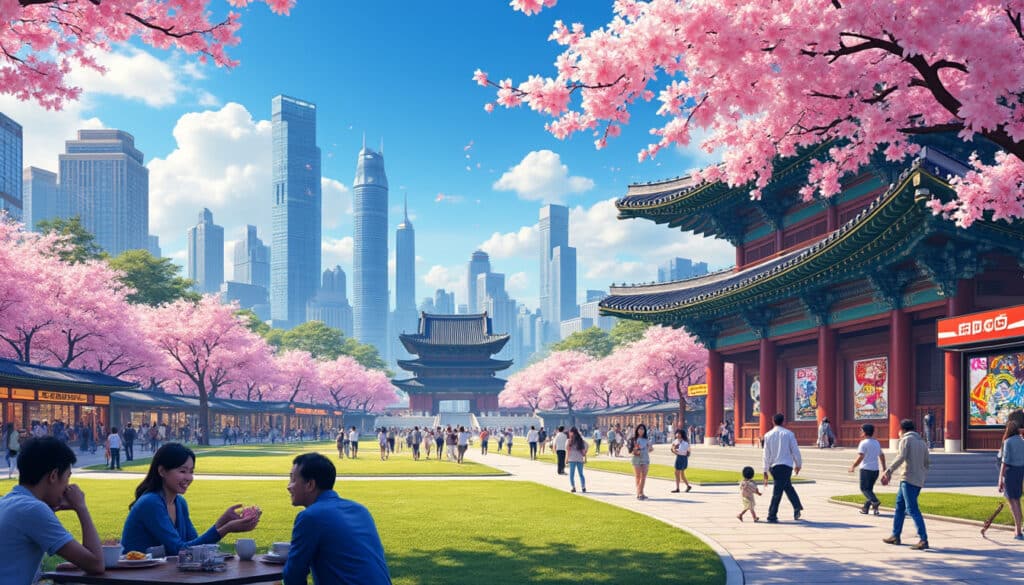
Seoul, the bustling heart of South Korea, boasts a climate as vibrant and varied as its cultural landscape. Visitors and residents alike are treated to four distinct seasons, each bringing its own flavor to the city. From the icy chills…
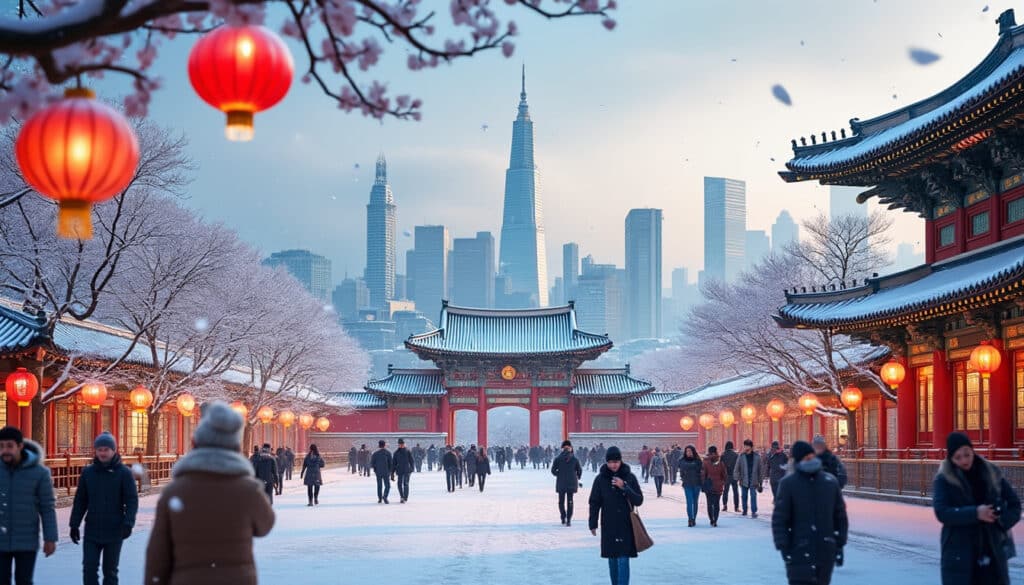
When imagining Seoul in winter, visions of snow-dusted palaces, serene parks, and bustling streets adorned in festive decorations might come to mind. But does it truly snow in Seoul? While South Korea’s capital city does experience winter weather, it doesn’t…

Flooding and natural risks in Seoul
Seoul, the bustling heart of Korea, is not without its challenges. As the city juggles rapid urbanization and meteoric technological advances, it also faces the formidable threats of flooding and other natural risks. Dubbed as one of the “Mega Cities”,…
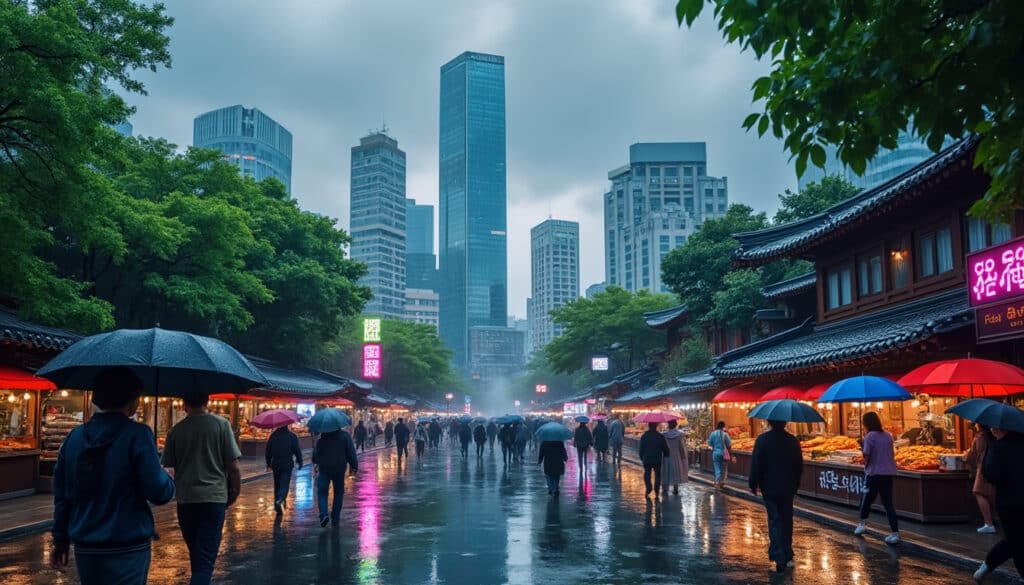
When one thinks of Seoul, the vibrant capital of South Korea, they might envision bustling streets, cutting-edge technology, and a rich blend of modern and traditional culture. However, nestled within these urban delights is a lesser-discussed yet crucial aspect: the…
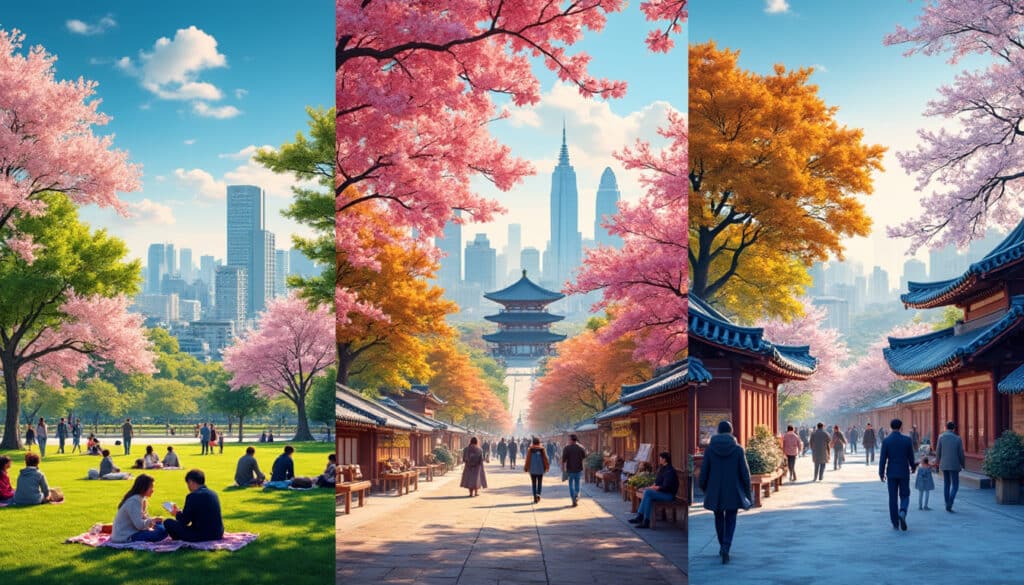
Is Seoul warm throughout the year?
Seoul, the dynamic capital of South Korea, is known for its rich culture and vibrant cityscape. Yet, it also presents a diverse climate that varies significantly across the year. Understanding Seoul’s weather patterns is essential for prospective travelers, businesses like…
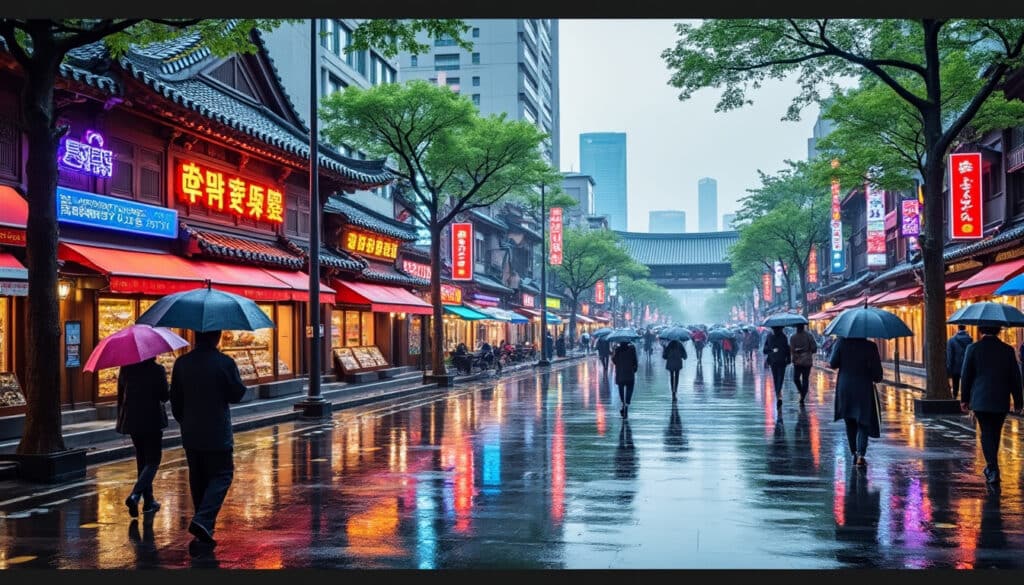
Rain and precipitation in Seoul
Seoul, the bustling heart of South Korea, is a city that experiences a wide array of weather patterns throughout the year. Its unique climate is characterized by hot, humid summers and cold, dry winters, influenced by its geographical location and…
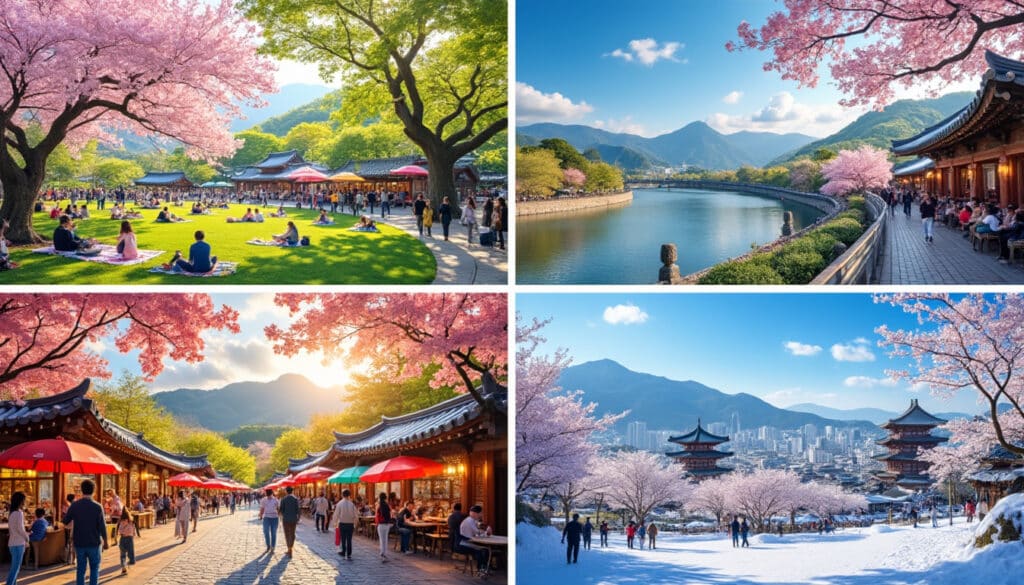
Seoul, the vibrant heart of South Korea, is a city that never sleeps. With its bustling streets and a culture that blends the traditional with the ultra-modern, it offers an experience for every kind of traveler. One of Seoul’s most…

Seoul, the vibrant capital of South Korea, presents a captivating blend of ancient traditions and bustling modernity. In this city where time seems to stand still and rush forward simultaneously, experiencing the beginning of a new day at sunrise is…
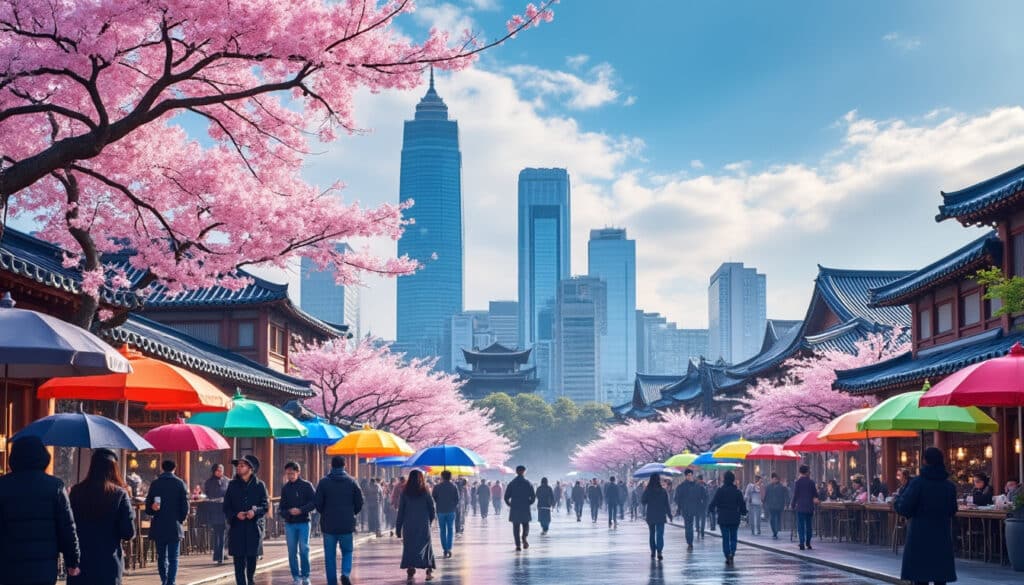
What is the weather like in Seoul?
Seoul, a bustling metropolis with a perfect blend of ancient traditions and modern innovations, often leaves its visitors and residents curious about its weather patterns. While the city is famous for its historic palaces, cutting-edge technology, and mouth-watering cuisine, understanding…
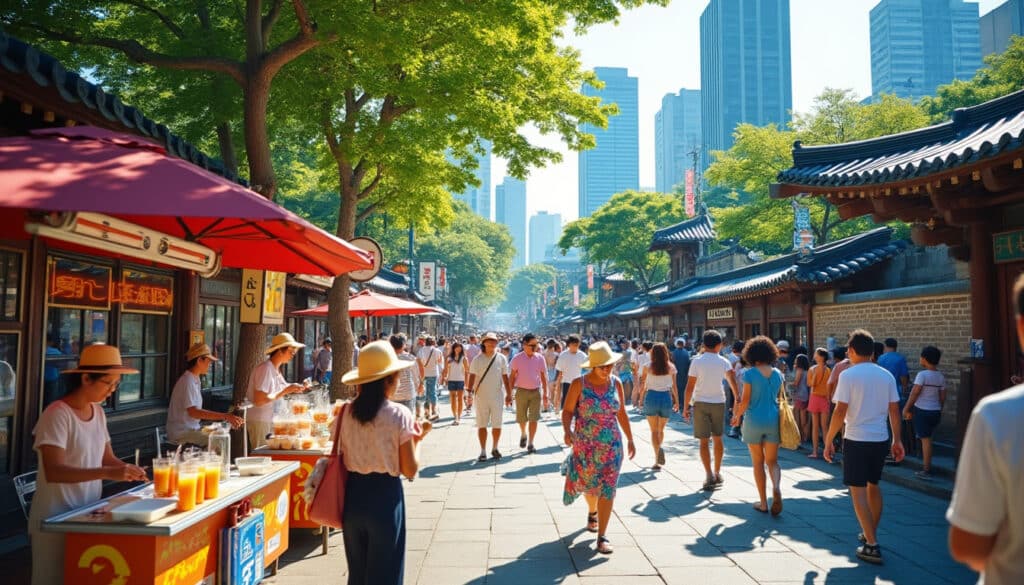
Seoul, a vibrant city known for its mix of traditional culture and modern innovation, transforms under the blazing summer sun. With its hot and humid climate, Seoul during summer is a true testament to the concept of endurance and adaptation.…

